For years, data literacy was treated as a nice-to-have — a skill for analysts, not an enterprise concern. But that’s no longer the case. Artificial intelligence is becoming embedded in day-to-day operations. At the same time, regulatory pressure is rising across every industry.
Together, these forces are forcing organisations to confront a simple truth: without data-literate teams, digital transformation stalls and decision-making breaks down.
That urgency is reflected at the executive level. According to DataCamp’s 2025 State of Data and AI Literacy Report, 86 per cent of business leaders now rank data literacy as essential for everyday work.
Enterprise data literacy isn’t just about individual upskilling either. It’s a structural capability — one that shapes how organisations think, move, and scale. Without it, even the best tools deliver shallow insights. With it, leaders gain the clarity to act, and teams have the fluency to align.
Understanding data literacy in this broader, enterprise context is no longer optional. It’s foundational to building trust in AI, accelerating transformation, and staying competitive in a market where decisions can’t wait for someone else to explain the data.
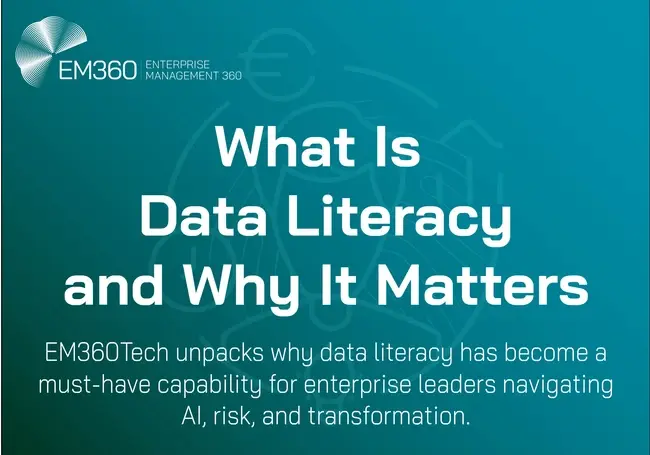
Defining Data Literacy for the Enterprise
Data literacy isn’t about learning to code or memorising technical terms. It’s about having the confidence and capability to work with data in a way that supports better decisions. That means knowing what to ask, spotting when something doesn’t add up, and understanding enough context to question what you’re given — not just accept it.
In the enterprise, it’s not one person’s job. If your organisation is serious about becoming data-driven, then data literacy has to sit across every team, not just the analysts. Because the cost of poor understanding compounds quickly — missed trends, flawed assumptions, delayed action.
A modern definition that goes beyond dashboards
Old-school definitions of data literacy focused on access. Could someone open a dashboard and read the numbers? But today, that’s the baseline — not the goal.
Modern data literacy is about interpretation. It’s knowing how to put numbers into context and ask what they really mean. It’s about drawing insights from data and knowing when not to trust them.
This is where data storytelling comes in. Not as a way to simplify the message, but to give it weight and direction. It’s the difference between reporting what happened and helping others understand why it matters.
Who needs it, and why is it not just for analysts?
Data flows through every function in the business — and more often than not, it’s non-technical users making the calls. HR, marketing, operations, finance. Each team is making decisions powered by metrics, dashboards, and increasingly, AI-generated insights.
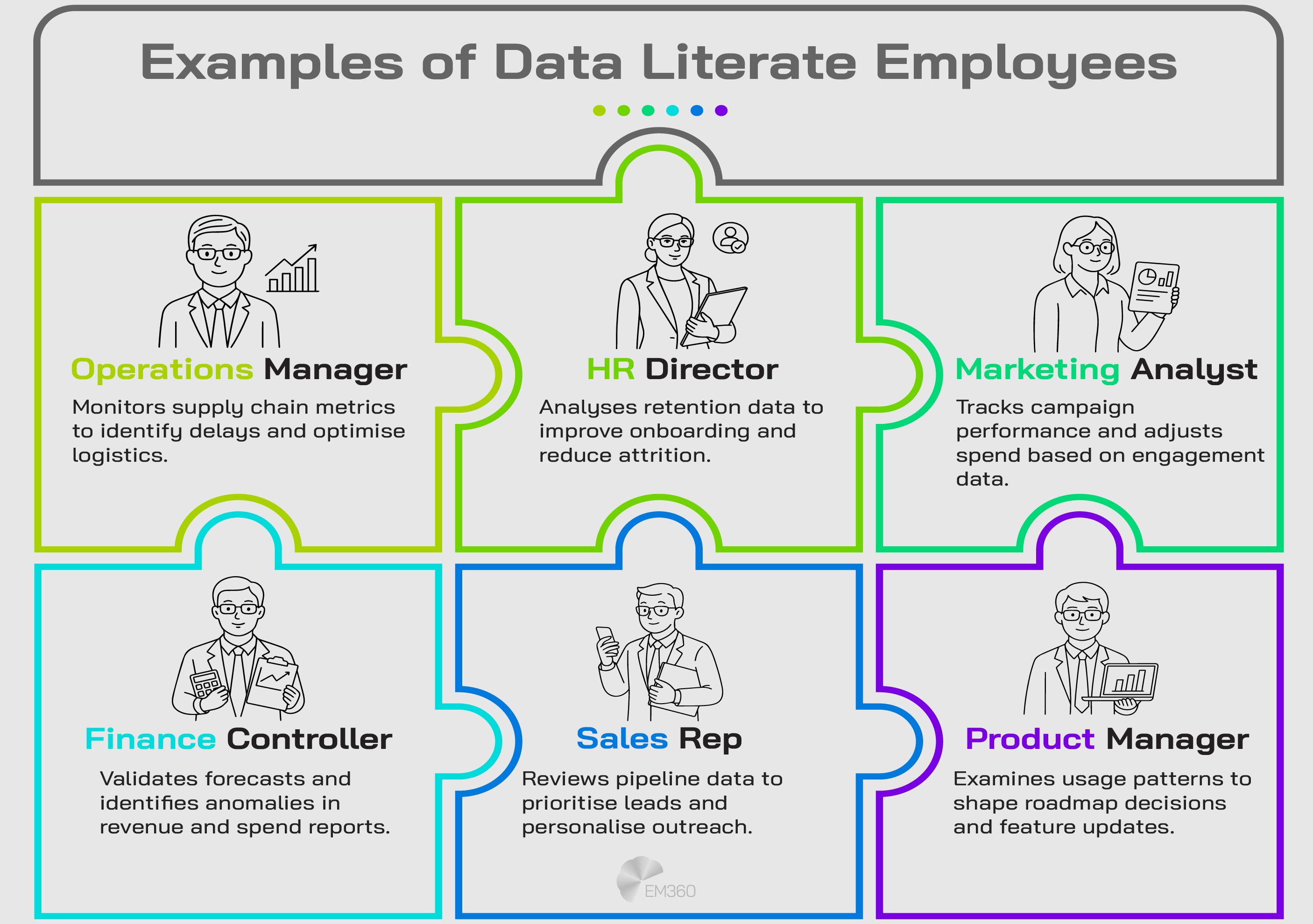
A data-literate employee doesn’t need to build models or query databases. They need to know how to read what’s in front of them, ask better questions, and make choices they can stand behind. That’s not a niche skill anymore. It’s a basic requirement for any enterprise that wants to move with clarity — not just speed.
Why Data Literacy Now Demands Board-Level Attention
Data literacy isn’t a training initiative. It’s a strategic lever. And like any lever with enterprise-wide impact, it belongs at the board level.
Organisations today are under pressure to modernise quickly. AI pilots are turning into production deployments. Data volumes are growing exponentially. And regulators are tightening expectations around governance and accountability.
In that environment, the risk isn’t just bad data. It’s leadership teams making decisions without understanding the data they’re using — or worse, assuming others will handle it.
Enterprise technology strategy now hinges on one core question: does your organisation trust its own insight? If the answer isn’t a confident yes, you don’t have a tooling problem. You have a literacy gap.
The business case: ROI and risk reduction
Most organisations already recognise the need for data literacy programs — but few are treating them as a value driver. That’s where the gap is.
According to a major academic study commissioned by Qlik for the Data Literacy Project, large enterprises with strong corporate data literacy experience $320 to $534 million in higher enterprise value. That represents a performance uplift of up to five per cent — a difference that directly impacts market position and investor confidence.
The upside isn’t just growth. It’s resilience. Teams that understand their data make faster, smarter decisions. They course-correct earlier. They challenge flawed assumptions before they snowball into risk.
This is why improving data literacy is no longer about building skills in isolation. It’s about unlocking better strategy execution, higher-quality forecasting, and more confident leadership at every level.
Why AI without data literacy is a fast path to failure
The pressure to adopt AI tools is only increasing — but deployment alone doesn’t equal progress. Without foundational data literacy, AI amplifies risk.
Models are misunderstood. Outputs are overtrusted. Biases go unchecked. And explainability becomes a black box no one’s willing to challenge.
Executives might not need to know how a model works line by line, but they do need to know when to question it. That requires a baseline of AI literacy — and it starts with understanding the data that feeds the system.
This gap is already being felt. According to the DataCamp report we mentioned before, 60 per cent of business leaders say their organisations face a clear shortfall in AI literacy. And it’s a problem because this is where skills gaps become strategy gaps.
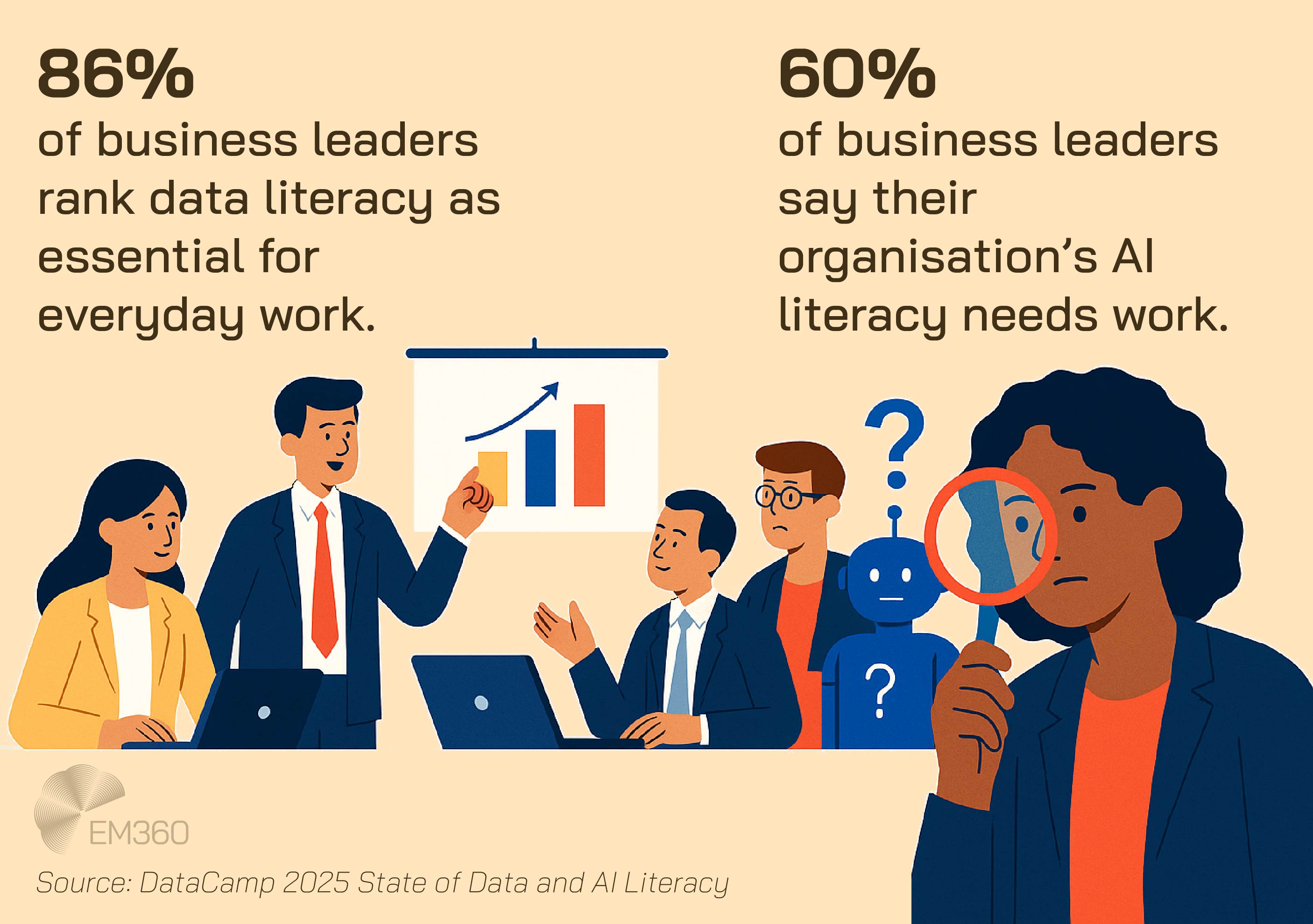
If people can't evaluate the insight they're given, they can't lead with confidence. And if leadership can't interrogate what their systems are telling them, AI becomes a liability, not an advantage.
The Core Capabilities of a Data-Literate Workforce
Being data literate isn’t a single skill. It’s a blend of technical and critical capabilities that allow people to interpret data, challenge what they see, and communicate insight in ways that move the business forward.
In a mature organisation, data literacy shows up differently depending on the role. But the underlying foundation is the same: the ability to read, question, and work with data in context. Not just to understand what’s happened, but to shape what happens next.
Technical competencies across the data ecosystem
At the technical level, data literacy means having enough fluency to understand how data flows through an organisation — where it comes from, how it’s processed, and how to interpret what it outputs.
This includes knowing the basics of data analysis, recognising common cleaning or transformation issues, and being able to spot when a result doesn't make sense.
It also means understanding the limitations of the systems you rely on. That could be how data is structured inside your ERP systems, how your dashboards are aggregating information, or what might be missing from your reports. You don’t need to be a data engineer to ask smart questions about how that information got there.
For technical roles — like analysts, engineers, and data scientists — these skills go deeper. But across the broader data ecosystem, even frontline employees need the ability to pull apart a number and understand what’s behind it. That’s what moves people from data consumers to contributors.
Critical non-technical skills that power good decisions
But technical understanding alone isn’t enough. The most overlooked aspect of data literacy is how people apply judgement, context, and communication. It’s the non-technical layer that turns numbers into impact.
This includes the ability to understand data in relation to business goals, connect it to real-world performance, and communicate it clearly. A product manager needs to explain how usage data supports a roadmap shift.
A finance lead must spot anomalies before they hit the P&L. A marketer has to translate testing results into campaign strategy. None of that is about tools. It’s about fluency.
Strong data-literate teams also know when to ask for help. They know the limits of what a dashboard can tell them. They know when to flag issues with data governance or push back when a visual oversimplifies a complex reality. That kind of awareness builds resilience — and avoids blind spots.
What’s Driving the Urgency for Data Literacy in 2025
The pressure to improve data literacy isn’t just coming from within. It’s being driven by external forces that are changing how decisions are made, how teams are structured, and how enterprise technology strategies are executed.
Organisations that once treated literacy as a training topic are now facing a different reality. Data maturity is no longer a differentiator. It’s becoming a baseline requirement — and the gaps are starting to show.
AI integration and the rise of citizen analysts
AI has moved beyond the innovation lab. It’s in customer support workflows, financial forecasting models, internal knowledge systems, and everyday decision-making tools. In fact, 82 per cent of teams now use AI at least once a week — a sign of how embedded analytics has become in daily operations.
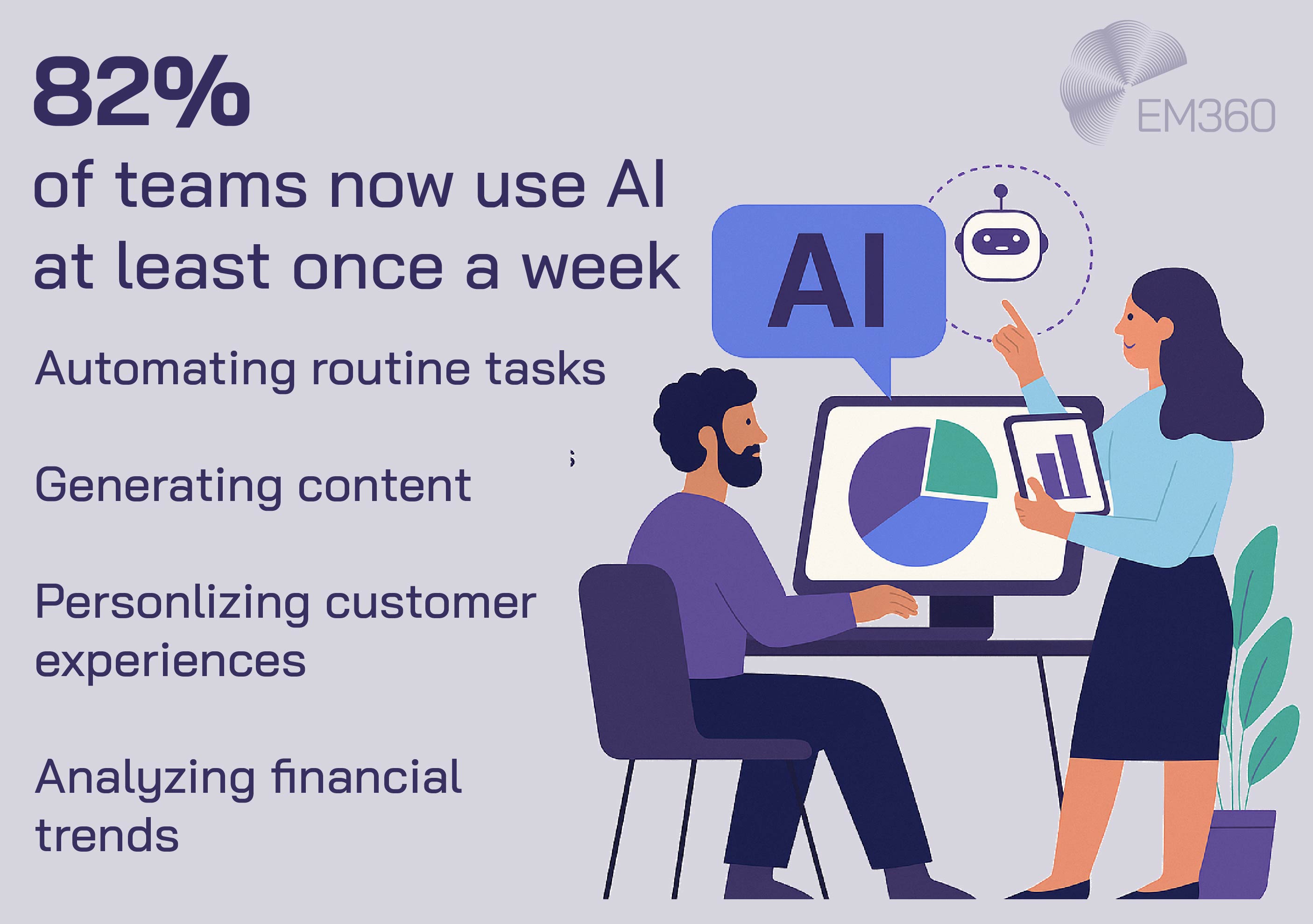
That shift has created a new class of data users — employees with access to advanced analytics who aren’t trained to interpret them.
These citizen analysts aren’t doing deep modelling or technical work. But they are being asked to explain recommendations, challenge results, and present outcomes based on tools they didn’t build. That’s where the risk emerges.
Without foundational data literacy training, AI outputs get overtrusted. Patterns are misread. Correlations become causation in boardroom narratives. This isn’t a tooling problem. It’s a fluency gap. One that can quickly erode business value if left unchecked.
The upside, though, is significant. When data-literate teams use AI, they amplify their impact. They draw sharper insights from data, spot early signals, and ask better questions before taking action. That’s where AI starts to deliver on its real promise — not just speed, but precision.
Regulatory pressure and data quality expectations
It’s not just AI raising the stakes. Compliance standards are evolving, and regulators are paying closer attention to how enterprises manage, govern, and explain their data. From GDPR to the EU’s AI Act, the bar for data governance is rising — and so is the cost of getting it wrong.
Organisations can no longer afford to treat governance as a back-end function. It has to be embedded into the way data is used, understood, and communicated. That means frontline teams need the awareness to handle sensitive information correctly.
Analysts need to flag anomalies, not just report on trends. And leadership teams need to be able to justify decisions when audits come.
It’s also about internal trust. Credibility suffers when enterprise data becomes dispersed, duplicated, or misinterpreted. Business units start building their own models. KPIs lose consistency.
And the value of your content management and data analytics investments starts to erode. In 2025, data literacy isn’t just about insight. It’s about defensibility.
And organisations that invest in it now will be better positioned to adapt — not react — when the next regulatory wave lands.
How to Build a Sustainable Data Literacy Programme
Improving data literacy isn’t about hosting a few workshops or rolling out an online course. To stick, it needs to be embedded in how people work, how leaders lead, and how the business measures progress. It has to become part of the organisation’s operational rhythm — not a project with an end date.
That shift is already underway. A recent survey by the Data Literacy Project shows that enterprise leaders plan to increase investment in data literacy training and upskilling by 49 per cent over the next 12 months.
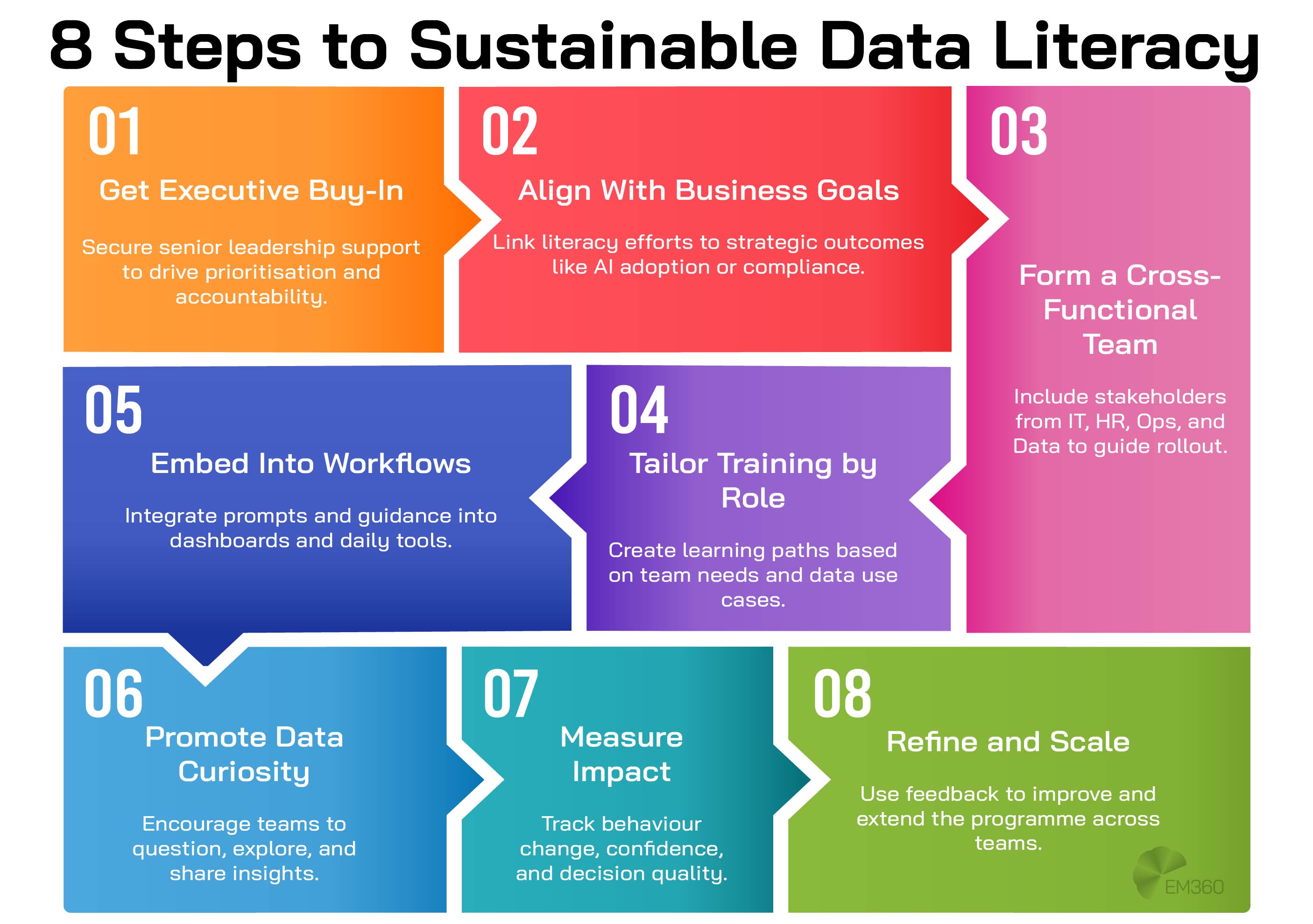
The most effective data literacy programmes treat capability building as a change initiative. One that’s sponsored from the top, shaped by real roles, and integrated into the systems people use every day.
Start with culture and executive sponsorship
Treating literacy as a training problem will lead to failure. Because the issue isn’t just what people know — it’s whether they feel empowered to ask questions, challenge outputs, and admit when they don’t understand the data in front of them.
That shift only happens when leaders model the behaviour. If the C-suite isn’t visibly prioritising literacy, no one else will either. The organisations seeing real traction are the ones where data curiosity is encouraged.
Where decisions are expected to be evidence-based, not just gut-led. And where enterprise-wide adoption is framed as a shared responsibility, not a task for a single team.
This is where culture matters most. Improving data literacy at scale means building trust around how data is used — and showing that understanding it is a strength, not a risk.
Use role-based training paths, not one-size-fits-all
Not every team needs the same skills. Trying to build a universal curriculum will only result in wasted time and low engagement. Instead, design your data literacy training around how people actually use data in their roles.
A sales leader might need to spot reporting inconsistencies in dashboards. A product manager may need to interpret customer behaviour trends. A finance team might need deeper forecasting fluency. Each group should have a learning path aligned to their context — and the tools they’re expected to work with.
This is also one of the most effective ways to close skills gaps. By focusing on function-specific outcomes, you reduce friction and improve retention. People are more likely to engage when they can see how it helps them do their job better.
Embed literacy into everyday tools and workflows
If training lives outside of the tools people use, it won’t stick. Embedding literacy into daily workflows is what turns a concept into a habit.
That could mean surfacing definitions and tips inside dashboards. It could mean auto-generated prompts to question anomalies. Or role-specific nudges built into your content management and business intelligence platforms.
The point is to meet people where they work. When data literacy is part of the workflow — not a separate initiative — it becomes easier to normalise, scale, and sustain. It also signals that the business sees literacy as part of performance, not just personal development.
This is how data-driven decisions move from aspiration to reality. Not through big speeches or annual training, but by quietly reinforcing the right habits, in the right places, every day.
Metrics That Matter: How to Measure Data Literacy Maturity
You can’t improve what you can’t measure. Yet most organisations still treat data literacy as an intangible goal — something to be talked about, rather than tracked.
That’s changing. As data literacy programmes mature, enterprise leaders are looking for sharper ways to evaluate impact. Not just who attended a training, but how behaviour has changed. Not just who can run a report, but who understands what they’re looking at and why it matters.
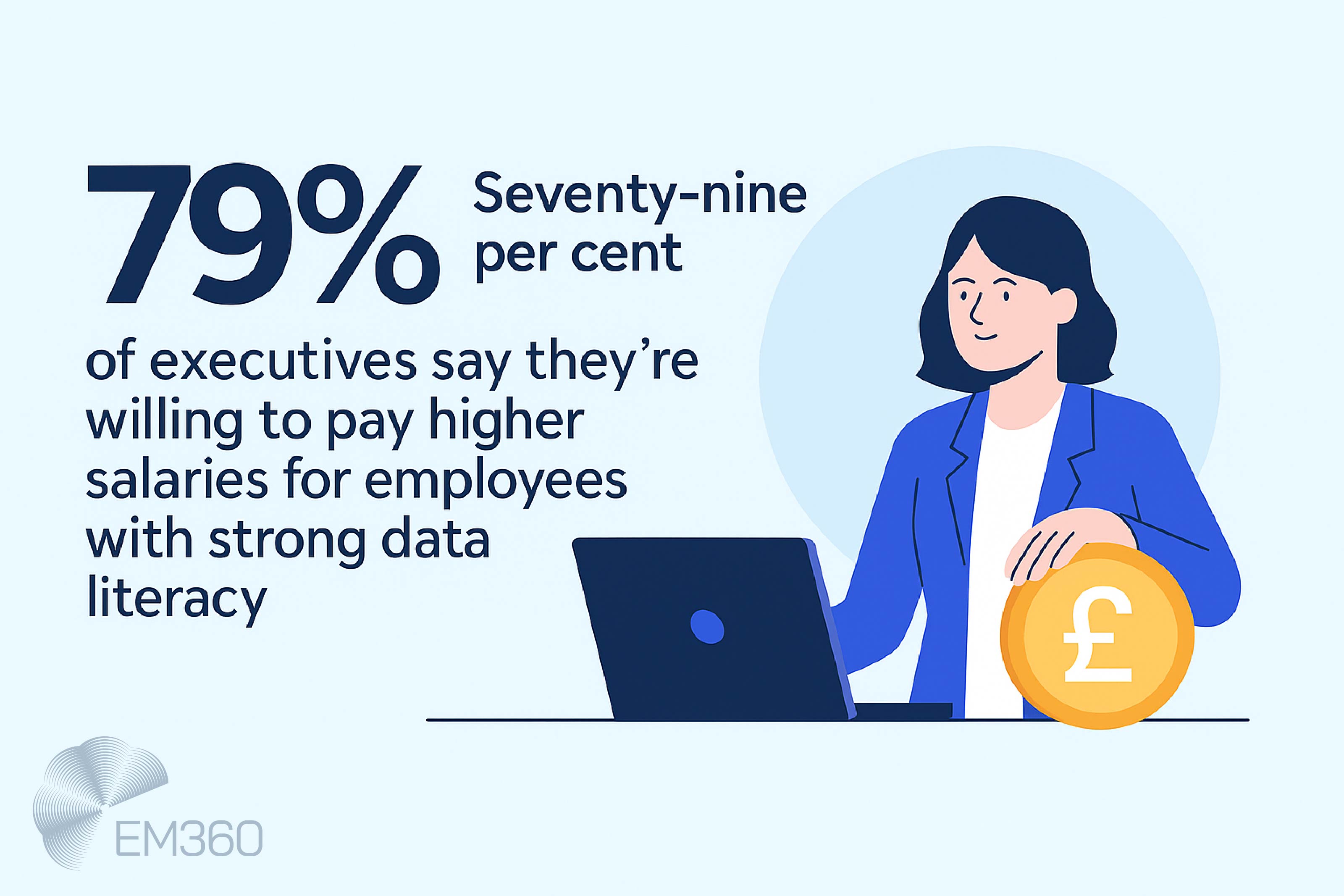
That shift is also reflected in how talent is valued. 79 per cent of executives say they’re willing to pay higher salaries for employees with strong data literacy — a clear signal that this is no longer a niche skill, but a recognised competitive asset.
The best metrics are layered. They capture both confidence and competence. And they reflect the shift from data usage to data fluency across the organisation.
From confidence to competence: benchmarks to watch
The first indicator of maturity is whether people feel confident working with data. But confidence without context is unreliable. That’s why leading organisations are now pairing self-assessments with performance-linked benchmarks that show whether teams are actually applying what they’ve learnt.
Examples include:
- The number of data-literate employees who independently question or challenge outputs
- How often non-technical users raise flags around anomalies or inconsistencies
- Improvements in team-level data quality scores and usage consistency
- Reduction in duplicated metrics or misaligned KPIs between departments
Some businesses are also tracking changes in how decisions are made. Are more choices being grounded in evidence? Are executive reviews focused on insight rather than instinct?
Over time, these signals become a practical way to assess whether your enterprise data literacy efforts are making a real impact — not just on tools, but on culture.
Common red flags and how to respond
Just as there are markers of success, there are also signs that your literacy efforts aren’t landing.
Some of the most common include:
- Training completion rates stay high, but application in workflows remains low
- Frontline teams report high confidence but continue to misread key metrics
- Business units interpret the same data differently, with no resolution process
- Resistance from middle management, who feel threatened by being asked to “relearn” their reporting tools
If these red flags appear, it doesn’t mean the programme is failing. It means it’s stalled. Often, the issue comes down to the environment. If people don’t have time, support, or space to apply new skills, the training won’t stick.
And if content management tools or dashboards aren’t designed to encourage deeper engagement, even well-trained users will default to surface-level use.
The fix usually starts with alignment. Reconnect your data literacy training to what teams actually need. Reinforce the expectation from leadership. And ensure your systems are structured to support — not punish — curiosity.
At its best, improving data literacy creates a culture of shared accountability. One where teams trust the data, trust each other, and know how to move from information to action.
Final Thoughts: Data Literacy Is the Difference Between Insight and Instinct
Enterprise leaders don’t need more dashboards. They need people who know how to question the data behind them, challenge what doesn’t feel right, and communicate what matters with clarity.
Enterprise data literacy isn’t just about building individual confidence. It’s about creating shared fluency across every team. When that happens, decisions stop relying on instinct. They start reflecting insight. And organisations gain more than just speed. They gain trust.
EM360Tech works with data leaders, analysts, and innovators who are building that shift from the inside out. Our expert network and thought leadership platform help bring these conversations to the forefront — where they can shape real strategy, not just theory.
If data is already at the centre of your business, literacy needs to be right beside it.


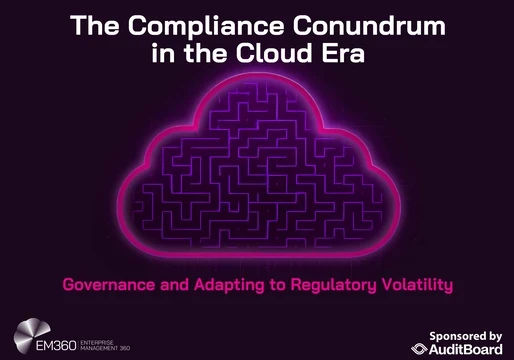

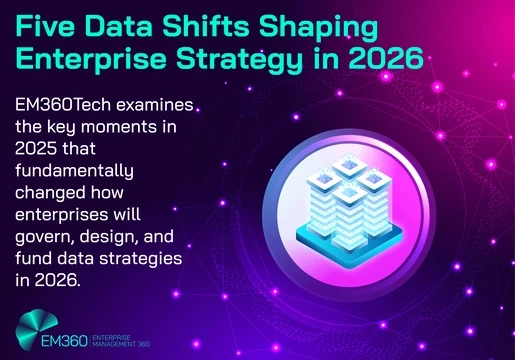

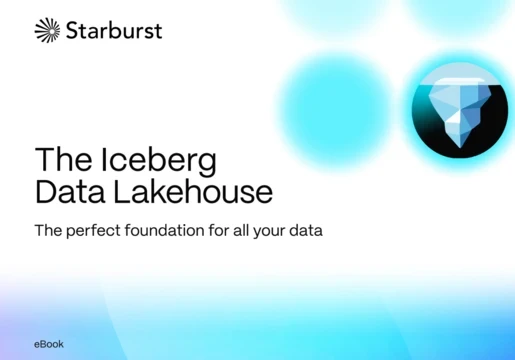
Comments ( 0 )